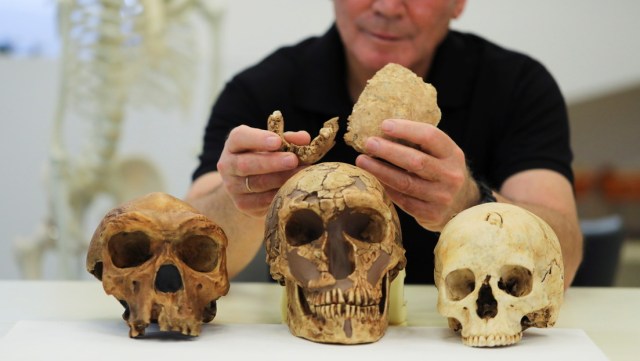Lapadilla

Scientists say a new prehistoric man recently discovered in Israel calls into question the idea that Neanderthals arose before man migrated south to Europe.
Archaeological excavations near the central Israeli city of Ramla, led by a team from the Hebrew University of Jerusalem, have uncovered prehistoric remains that do not belong to any known species of Homo, including modern humans (Homo sapiens).
In a study published in the journal Science, anthropologists and archaeologists at the University of Tel Aviv, led by Yoshi Jaitner, named the site after the discovery of the remains, Homo Nature Ramla.
The skeleton is 120,000 to 140,000 years old and shares features in common with Neanderthals, especially teeth and jaws, and other types of prehistoric men, mainly the skull, the researchers said in a statement Thursday.
“At the same time, this type of homo is very different from modern humans, with a completely different skull structure, chin and very large teeth,” they noted.
In addition to the human remains, the excavations revealed a depth of eight meters and the remains of numerous animal bones and stones.
“Archaeological discoveries related to human fossils show that Homo natures Ramla had advanced stone tool making techniques and may have interacted with local Homo sapiens,” Jaitner said.
According to the expert, the discovery is “particularly exciting because it shows that at this stage of human evolution there were many different types of homo at the same time.”
Researchers have suggested that some of the fossils previously found in Israel 400,000 years ago belong to the same type of prehistoric humans.
– Evolution Puzzle Piece –
The discovery of Homo Nature Ramla casts doubt on the theory that Neanderthals first appeared in Europe before migrating to the south.
“Because this theory is questionable [el descubrimiento] It suggests that the ancestors of European Neanderthals already lived on the Levant 400,000 years ago, ”said Israel Hershkovitz, an anthropologist at the University of Tel Aviv.
“Our findings suggest that the famous Western European Neanderthals are remnants of the largest population that lived here on the Levant, and there is no other way,” he added.
One of the authors of the study, Rachel Sarik, a dentist and anthropologist at the University of Tel Aviv, explained that the findings indicate that “small groups of Homo natures Ramla migrated to Europe, where they became the ‘classic’ Neanderthals we know.” In Asia, they became prehistoric peoples with the characteristics of Neanderthals. ”
“Between Africa, Europe and Asia, the land of Israel was a melting pot, where different peoples came together and then spread,” he estimated. “The invention writes an exciting new chapter in the history of man,” he said.
According to Hershkovitz, this discovery is of great scientific importance because it allows us to add a part to the mystery of human evolution and to better understand the migration of humans in ancient times.
Geneticists studying DNA by European Neanderthals have in the past called the existence of a similar population the “missing population” or “population X”, which may have interfered with Homo sapiens 200,000 years ago.
In their article, Israeli researchers suggest that Homo Nature Ramla may be that missing link. AFP





:quality(85)/cloudfront-us-east-1.images.arcpublishing.com/infobae/KTKFKR763RBZ5BDQZJ36S5QUHM.jpg)